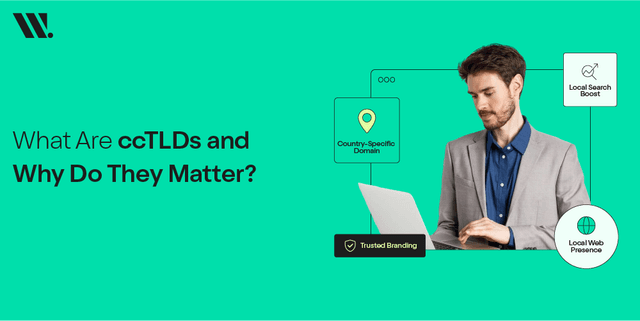Well, gone are those days when content was all about maximum word count and stuffing keywords!
Now, it is all about trying to find that right balance between search engine optimization and offering real and interesting content to real people.
Either way, to get your blog posts to rank and have people to read them, you should do better at both.
This checklist will demonstrate to you in the most real sense how to do content writing for SEO that passes the ranking standards of Google search and how it keeps your audience glued to your site on one blog.
The Importance of Striking the SEO to User Experience Balance
These are no longer the days of keyword stuffing and spammy backlinks to jump to the top. Contemporary content writing is all about delivering value, adding to the search engine, as well as the consumers. For this, you must understand SEO content strategy:
Google's Attention to Helpful Content and E-E-A-T
Google changed its algorithm in such a way that it gives credit to helpful content based on E-E-A-T guidelines- Experience, Expertise, Authoritativeness, and Trustworthiness. This implies that your content should be properly researched, trustworthy, and of such a nature that it is likely to assist the users.
User Engagement Metric Importance
Users' interactions with your content are tracked by Google. Search engines were informed by such metrics as bounce rate, time on page, and scroll depth to help them determine whether your content is useful or not. When you optimize your writing for Google and users, you are making sure you are not just getting clicks; you are keeping them around.
Getting to know what Google wants
In order to establish a good SEO content strategy, you must be acquainted with how Google assesses your content.
Factors in Google Ranking Factor
Search engines look at:
- Applicable keywords
- Organization structure
- Headings usage
- Internal/ external links
- E-E-A-T-compliant
- Mobile-friendliness and page speed
These are the things to keep in mind as you develop audience focused content that is also Google-friendly content and does not hurt the experience of the people reading the content.
The Significance of Keyword Optimization Devoid of Stuffing
It is important to place strategic keywords, but one should not overdo this aspect. Keyword stuffing not only pushes the reader away, but it may also hurt your ranking. Follow these SEO tips for content creators:
Keywords Should Be Used Naturally
In learning the art of keywords in the piece, the trade secret of SEO is revealed. Read below to know how to use keywords naturally in the content:
Tips Regarding Keyword Placement:
- Put the key phrases at the title, URL, meta description, and introductory paragraph (must be in the first 100 words)
- Add secondary keywords in H2/H3 header
- Sprinkle them in the body, but naturally in a way that makes sense
Tip: To balance SEO and user engagement, you should never push/overuse keywords into a sentence. In case it does not come out in a natural way, rephrase it.
Design Content that has Search-Intent
One of the key markers of SEO is user intent. You should have matching content with what the one searching is indeed seeking.
Search Quest Types:
- Informational: “How to create SEO guided content”
- Commercial: Best SEO tools for writers
- Transactional: Buy in SEO writing services
Determine the purpose of the search and write accordingly. Shape your SEO writing approach on this basis.
Write Content That Talks to Real People: Your Audience
The most optimised post will not receive the success it should when it is not appealing to readers. Never forget about audience-related content.
You should make sure that your writing for search engines and real people is in clear and easy language: Use:
- No longer paragraphs (a paragraph must have around 20 lines)
- Bullet lists and numbered lists
- Simple sentence structure
- Engaging Tone
- Active voice sentences
Write in your own words, conveying a lively tone of writing with an active voice. This makes what you have posted seem more personal and easier to consume.
Make It Valuable, and Make It Actionable
Top content not only informs but also assists.
Value addition:
- Present valid evidence and statistics
- Provide real-life integration, How-To, and examples
- Provide responses to the questions that your audience is interested in (FAQs)
The aim is to make optimizing content for Google ranking also something that people would feel like reading, and take some action, as opposed to ignoring.
Structuring the Content for Google and the Readers
Good formatting applies to on-page optimization and understanding. So, the SEO content writing best practices are:
Heading Structure (H2, H3 and so on)
Headings simplify the reading of your content and allow Google to know the hierarchy of the topics used. Use:
- H1: The blog post title
- H2s: Major parts (Subheadings)
- H3s: sub-points of each H2
Include Alt-Tagged Images
For creating high-quality content for SEO, use photos to improve the user experience and contribute to the Google image ranking, provided that you add meaningful alt text.
External Linking and Internal Linking
Make external links but also internal links on your site to other relevant pages (the latter also ensures that your page is visible to Google). It creates believability and enhances practices in SEO content writing.
Make it mobile responsive
Make sure the loading of your content is fast and is compatible with all platforms. These things come under technical SEO; however, these are also important for high rankings and low bounce rates. And one can achieve desired results with the help of a mobile-responsive design.
Typical Errors that Should be Avoided
Even professional writers occasionally face the traps of SEO. Some of the errors to avoid are:
- SEO optimized content only: You should never forget about your audience.
- Ignoring the needs of the audience: Do remember the audience you are writing to.
- Failure to update the previous content: Google likes new and current information.
- Thin or duplicate content: Whatever you submit should be original and value-filled.
Conclusion
At this point, you must know how to write content that is useful for both Google and the readers. With the proper choice and placement of keywords, user-oriented content and format, and the consideration of Google E-E-A-T content guidelines, you will be able to make a ranking and resonating content.
In case you want to bring your content on another level, Websouls provides business-tailored services of professional content writing in the SEO sphere, as well as digital marketing services in Pakistan.
Whether you need keyword research or fully-fledged content strategies, Websouls helps you to not only produce Google-friendly content but also content that is convertible.
Your online growth can be smart and with the help of the experts.
FAQs
How can I write content that ranks well on Google and also engages readers?
Pay attention to keyword factors, user intention, and add facts. Write as you speak, as well as adopt a plain structure. Make sure to write in understandable wording and avoid fancy words. Also, your paragraphs must be short and well-connected.
What are the best practices for writing SEO-friendly yet user-focused content?
You must understand how to use keywords naturally in the content that doesn’t look stiff. Learn E-E-A-T strategy, write in easily-readable sections, and optimize it to work on phones.
How do I balance SEO with reader experience in blog writing?
Concentrate on user experience, allocate keywords strategically, and organize content in such a way that it is easily readable by the search engines.
What strategies help write content optimized for both search engines and humans?
Get to know the intent of the user, and use headings well. Make sure to add meta tags (meta title, meta description, blog title), also add H1, H2, H3, and so on. In addition to this, add links in your content to make your piece of writing more helpful.
How do Google’s algorithms evaluate content quality and relevance for users?
Google considers such aspects as keyword relevancy, E-E-A-T, user interaction, mobile-friendliness, and ability to organize content.
Why is user intent important when writing for SEO and your audience?
Unless you write the piece of content the reader wants to see, it will not rank or convert, even if it is optimized.
What are the key elements of content that satisfies both Google and your readers?
Good use of keywords, insights that are value added, interesting style, good layout, and quality reference.
How can I improve content readability without hurting SEO?
Write in short paragraphs, active voice, using bullet points, and in simple language, also add keywords naturally.
What’s the difference between keyword-stuffed content and optimized content?
When you stuff keywords in the content, it makes the whole content feel unnatural or robotic. It doesn't make sense. On the other hand, when it is optimized properly, the content will make sense and be relevant.
How can content structure help satisfy Google’s ranking factors and reader flow?
To make Google ranking factors satisfied and also to keep a reader flow, you must focus on adding Headings accordingly in the content. Make use of links and images to make your content engaging, and these things also help grab the reader's attention.






